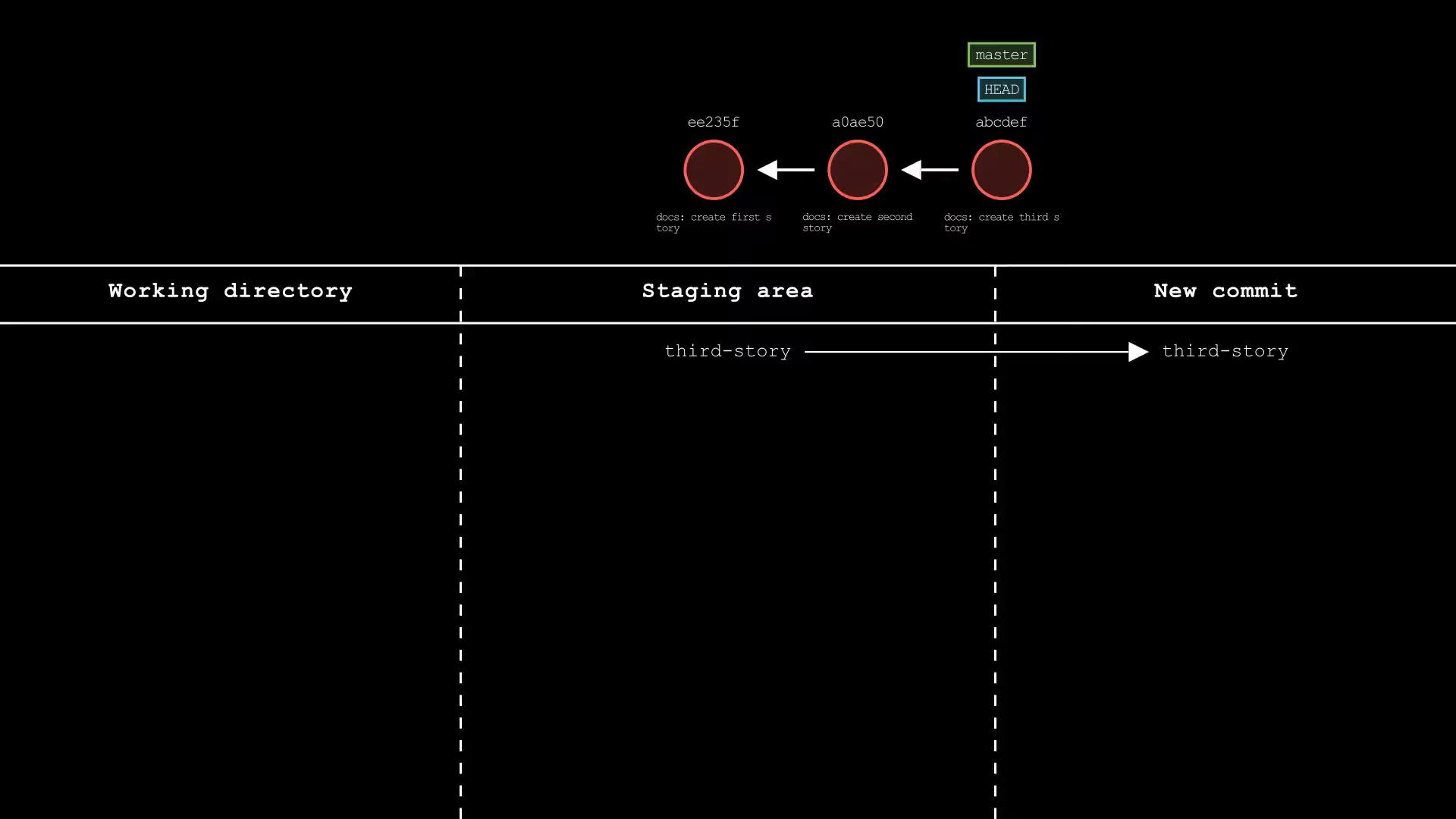Save Changes
Please follow the sequence.
Clone the repository KarChunT/git-training to work-on.
git add
The git add command simply pushes files or directories to staging area/environment. By doing this, you tell Git to include those changes in the next commit. Of course, you can add more than one file/directory at a time.
git add <file/directory>
git add . # all files and directories
# example
touch third-story programming # create new files
git add third-story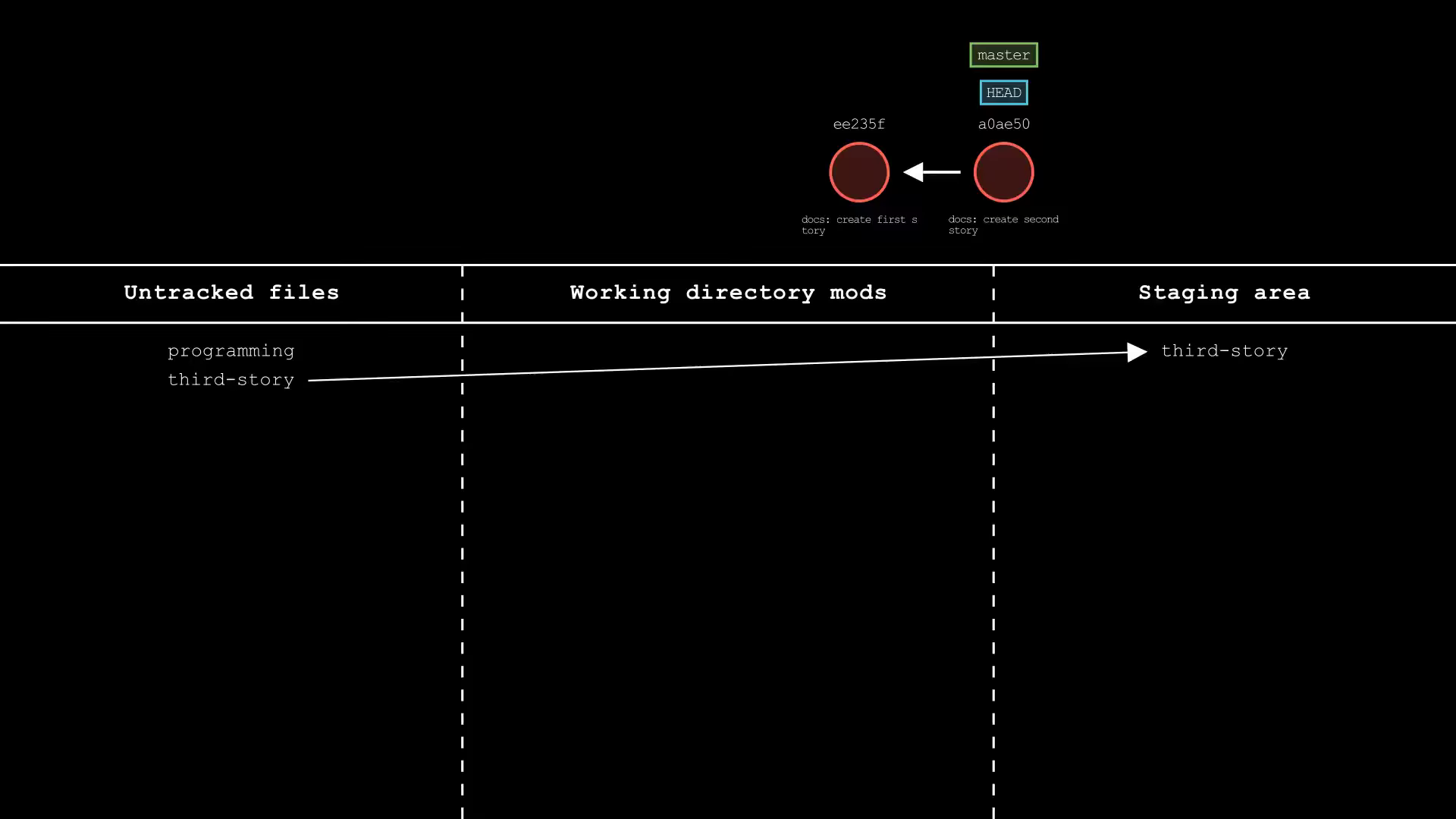
git status
The git status command simply lists which files are staged, unstaged, and untracked.
git status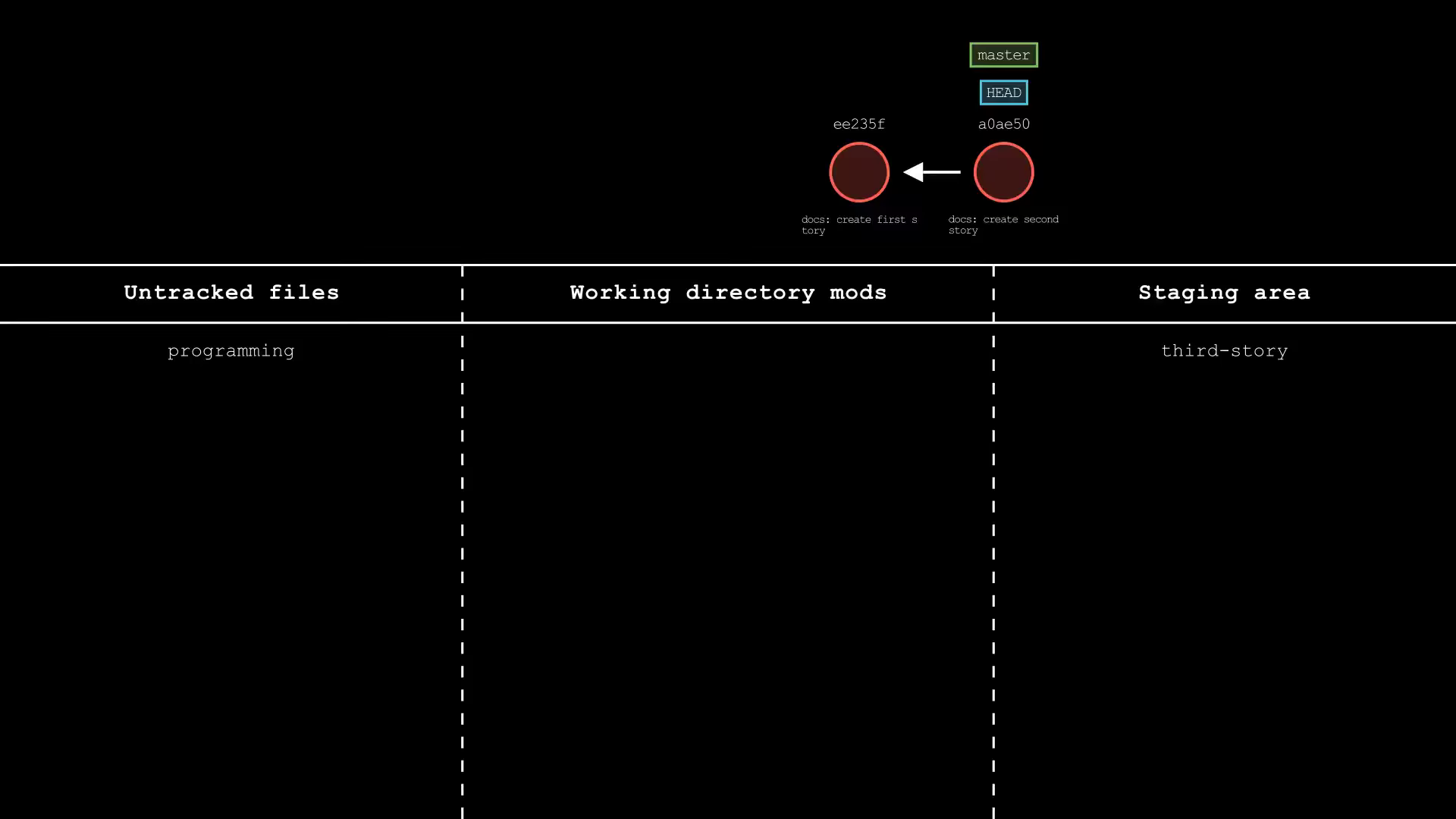
git commit
The git commit command simply saves or commits that file changes into a Git project. You can think of as snapshots or milestones along the timeline of a Git project.
git commit # opens a new editor
git commit -a # automatically stage files that have been modified and deleted
git commit -m "commit message" # flag of the message
git commit -am "commit message" # combination of am
git commit -s # user signed-off, certifies who is the author of the commit, tracking for patches
git commit --amend # modify the last commit
# example
git commit -m "docs: create third story"git log
The git log command shows the information that you need to know about all the commits, such as
- commit hash
- author name
- data of the commit: which files to be committed
- commit message
git log
git log --oneline # don't care about all extra information
git log --name-only # list the changed files
git log --graph --decorate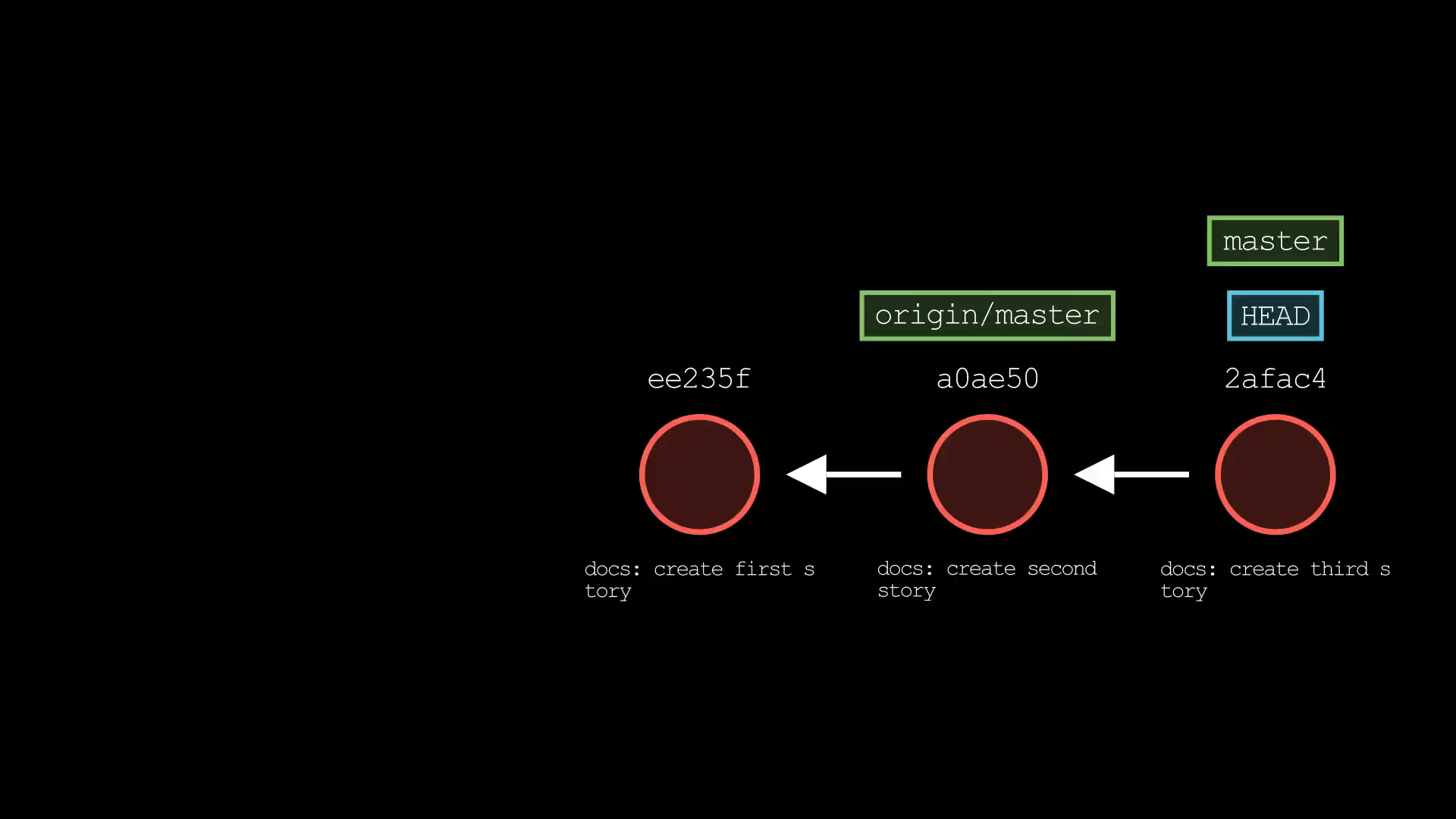
git diff
The git diff command shows the differences between two data sources. Data sources can be
- commits
- branches
- files, etc
git diff # comparing all changes
git diff <file>
git diff HEAD <filename> # filename is optional
git diff --staged/--cached <filename> # only for staged changes, filename is optional
git diff <commit_hash> <commit_hash>
git diff <branch> <branch>
git diff <branch> <branch> <file> # comparing files from two branches
git diff --color-words # Highlighting changes with much better granularity
# Example
nano first-story # write some texts into it
git diff
How to read this?
@@ -50,8 +50,12 @@In this example, 8 lines have been extracted starting from line number 50. Then, 12 lines have been added starting at line number 50.
git restore
The git restore command will discard changes in working directory or if a file is tracked then you can restore or unstage that file to match the version in HEAD.
# discard changes
git restore . # all files
git restore <file> # same as git checkout <file>
git restore <pattern> # pattern = '*.c'
# unstage
git add first-story
git restore --staged <file> # same as git reset HEAD <file>
## unstage all files
git restore --staged .
git reset
# restore both index and working tree ---> same as git checkout
git restore --source=HEAD --staged --worktree <file>
# Example
git restore first-story
git restore --staged second-story
# even it's staged, it will restore all changes to same as HEAD commit
git restore --source=HEAD --staged --worktree second-story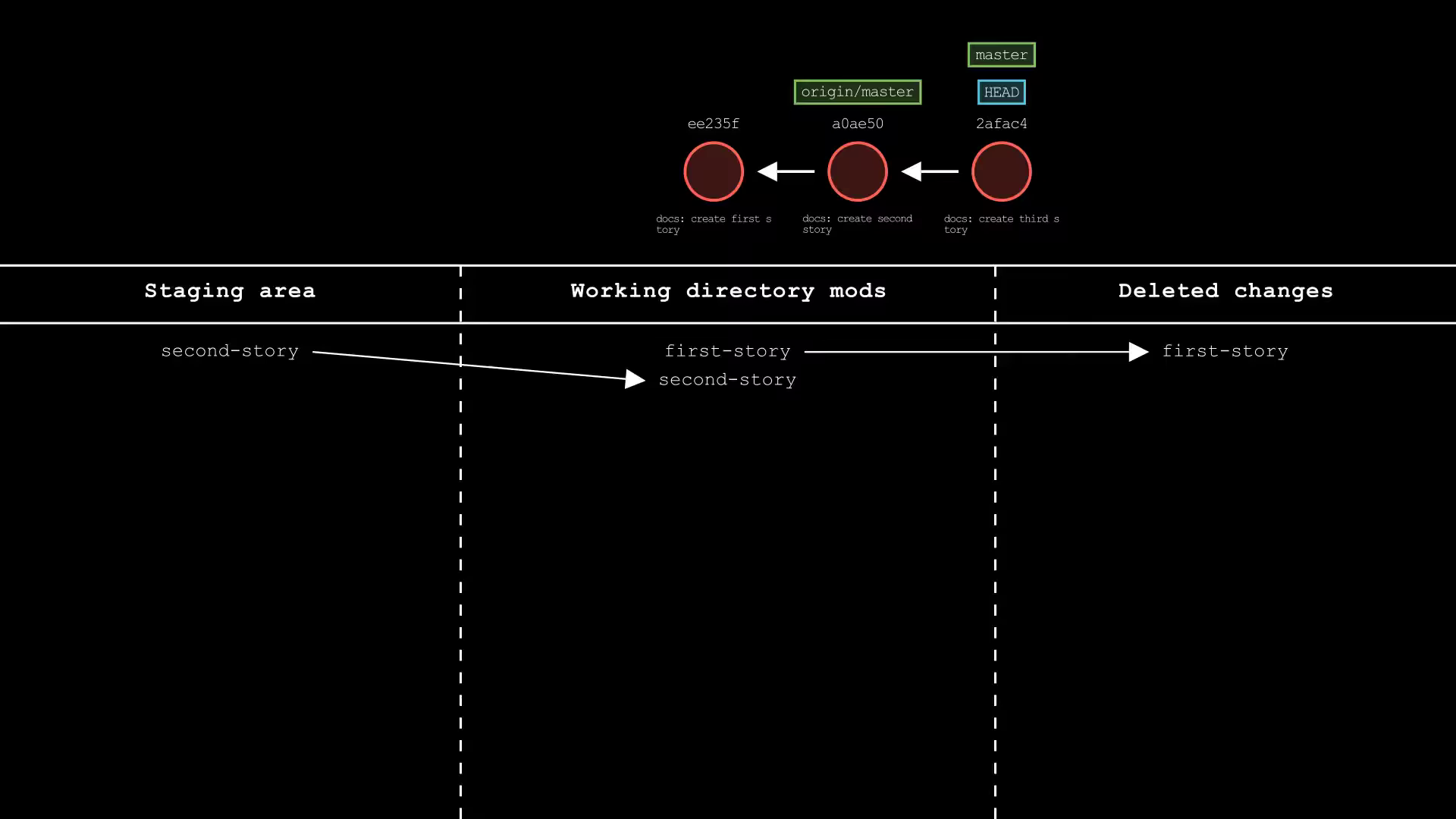
.gitignore
.gitignore is a file that will include all the globbing patterns to ignore the file to be commited. These could be the files like
- build artifacts like
/bin,/target - machine generated files like
.pyc - dependency caches like
node_modules - log file
- environments or secrets like
.env
*.log
.env*
test.txt
node_modules/
/bin